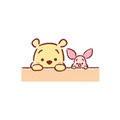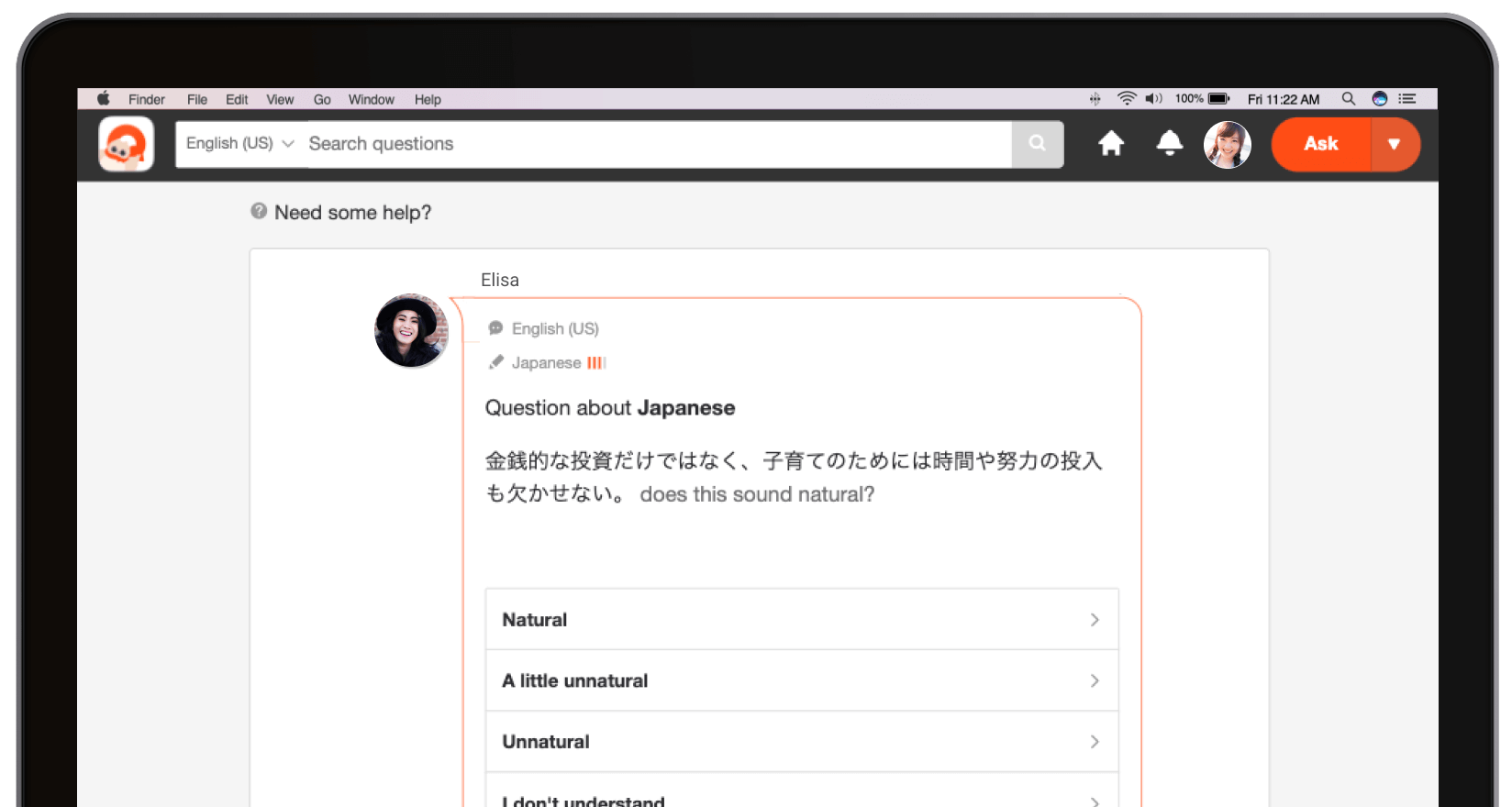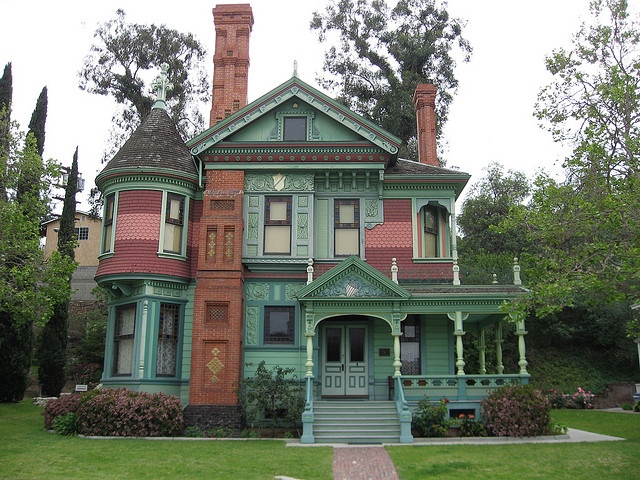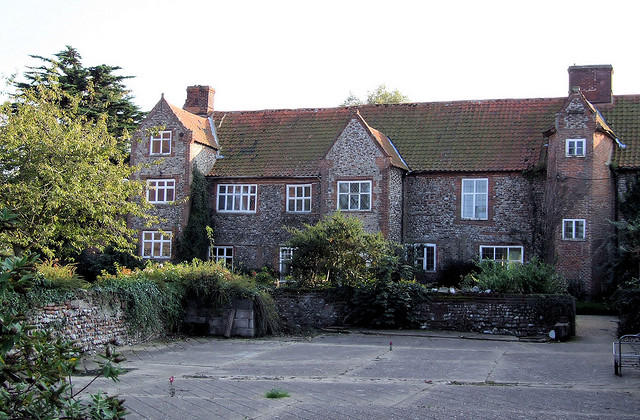Рабочая тетрадь Spotlight 6. Workbook. Страница 12
2b. My place — Моё место
1. Look at the house plan. Write the rooms, appliances and furniture in the box. Then write sentences, as in the example. — Посмотрите на план дома. Впишите в таблицу комнаты, устройства и мебель. Затем напишите предложения, как в примере.
- kitchen: fridge, sink, cooker — Кухня: холодильник, мойка, плита
- bedroom: bed, desk, chair, wardrobe, lamp, computer — Спальня: кровать, стол, стул, шкаф, лампа, компьютер
- living room: sofa, armchair, TV, coffee table — Гостиная: диван, кресло, телевизор, кофейный столик
- bathroom: bath, toilet, washbasin — Ванная: ванна, туалет, раковина
- dining room: dining table, chairs — Столовая: обеденный стол, стулья
- There is a fridge in the kitchen. — На кухне есть холодильник.
- There is a sink in the kitchen. — На кухне есть мойка.
- There is a cooker in the kitchen. — На кухне есть плита.
- There is a bed in the bedroom. — В спальне есть кровать.
- There is a wardrobe in the bedroom. — В спальне есть шкаф.
- There is a dining table in the dining room. — В столовой есть обеденный стол.
- There are chairs in the dinning room. — В столовой есть стулья.
- и так далее…
2. Look at the house plan in Ex. 1 and fill in: in, on, next to, opposite, between, behind. — Посмотрите на план дома в упр. 1 и вставьте: in, on, next to, opposite, between, behind.
- There is a bed in the bedroom. — В спальне есть кровать
- The desk is next to the bed. — Столик рядом с кроватью
- The fridge is opposite the cooker. — Холодильник напротив плиты
- The computer is on the desk. — Компьютер на столе
- The bathroom is between the bedroom and the dining room. — Ванная между спальней и столовой
- The cat is behind the sofa. — Кошка за диваном.
3. Underline the correct item. — Подчеркните правильный вариант
- There are any /some desks in the classroom. — В классе есть несколько парт
- There aren’t some /any children in the garden. — Детей в саду нет
- There aren’t some /any books on the desk. — На столе нет книг
- Are there any/ some chairs in the living room? — В гостиной есть стулья
- There’s a/ some table in the living room. — В гостиной есть стол
- Is there some /a cat under the table? — Под столом есть кошка?
- There are some/ any students in the classroom. — Есть несколько учеников в классе
- Is there some /an armchair in the living room? — В гостиной есть кресло?
4. Read the letter and fill in: • on • has • are • in • of • and • to • but — Прочитайте письмо и вставьте: on, has, are, in, of, and, to, but
Dear Danny, Hi! How are you? I hope everything is ok! I really love our new place. It’s a beautiful big house by the sea and just outside the village. The house 1) has got two floors. There are three large bedrooms and a bathroom 2) on the first floor. The living room and the kitchen are on the ground floor and there is another bathroom next 3) to the kitchen. The kitchen is very big and it has got lots of cupboards. The living room is fantastic. It has got my grandmother’s antique sofa 4) and a lovely fireplace in it. There 5) are three comfortable armchairs in front of the fireplace. My favourite room is my bedroom. It is on the first floor opposite my parents’ bedroom. There is a computer on my desk and lots of posters on the walls. I’ve got a nice bed and a big wardrobe next to the window, 6) but I haven’t got a TV 7) in my room yet. There is а big garden in front 8) of the house and there is a garage for our two cars. That’s our new house! I hope you can come and visit us soon I miss you. Love, Pat
Дорогой Дэнни, привет! Как дела? Надеюсь, что все хорошо! Мне действительно нравится наше новое место. Это красивый большой дом у моря прямо за деревней. В доме два этажа. Есть три больших спальни и ванная на втором этаже. Гостиная и кухня на первом этаже, и рядом с кухней есть еще одна ванная комната. Кухня очень большая, и в ней есть много шкафчиков. Гостиная просто фантастика. В ней есть антикварная бабушкина софа и камин. Перед камином есть три удобных кресла. Моя любимая комната — спальня. Она на втором этаже напротив спальни моих родителей. На столе есть компьютер, а на стенах много постеров. У меня хорошая кровать и большой шкаф рядом с окном, но в моей комнате пока нет телевизора. Перед домом есть большой сад и гараж для наших двух машин. Вот такой наш новый дом! Надеюсь, ты сможешь навестить нас скоро. Я скучаю по тебе. С любовью, Пэт.
Look at the houses windows
- Английский (американский вариант)
The house’s windows
- Английский (американский вариант) Практически свободно говорящий
- Немецкий
- Португальский (бразильский вариант)
I think either one works.
- Английский (американский вариант)
either one
- Английский (американский вариант)
either one is correct 🙂
- Английский (американский вариант)
Either
Символ показывает уровень знания интересующего вас языка и вашу подготовку. Выбирая ваш уровень знания языка, вы говорите пользователям как им нужно писать, чтобы вы могли их понять.
Мне трудно понимать даже короткие ответы на данном языке.
Могу задавать простые вопросы и понимаю простые ответы.
Могу формулировать все виды общих вопросов. Понимаю ответы средней длины и сложности.
Понимаю ответы любой длины и сложности.


Решайте свои проблемы проще в приложении!

Рабочая тетрадь Spotlight 6. Workbook. Страница 12
2b. My place — Моё место
1. Look at the house plan. Write the rooms, appliances and furniture in the box. Then write sentences, as in the example. — Посмотрите на план дома. Впишите в таблицу комнаты, устройства и мебель. Затем напишите предложения, как в примере.
- kitchen: fridge, sink, cooker — Кухня: холодильник, мойка, плита
- bedroom: bed, desk, chair, wardrobe, lamp, computer — Спальня: кровать, стол, стул, шкаф, лампа, компьютер
- living room: sofa, armchair, TV, coffee table — Гостиная: диван, кресло, телевизор, кофейный столик
- bathroom: bath, toilet, washbasin — Ванная: ванна, туалет, раковина
- dining room: dining table, chairs — Столовая: обеденный стол, стулья
- There is a fridge in the kitchen. — На кухне есть холодильник.
- There is a sink in the kitchen. — На кухне есть мойка.
- There is a cooker in the kitchen. — На кухне есть плита.
- There is a bed in the bedroom. — В спальне есть кровать.
- There is a wardrobe in the bedroom. — В спальне есть шкаф.
- There is a dining table in the dining room. — В столовой есть обеденный стол.
- There are chairs in the dinning room. — В столовой есть стулья.
- и так далее…
2. Look at the house plan in Ex. 1 and fill in: in, on, next to, opposite, between, behind. — Посмотрите на план дома в упр. 1 и вставьте: in, on, next to, opposite, between, behind.
- There is a bed in the bedroom. — В спальне есть кровать
- The desk is next to the bed. — Столик рядом с кроватью
- The fridge is opposite the cooker. — Холодильник напротив плиты
- The computer is on the desk. — Компьютер на столе
- The bathroom is between the bedroom and the dining room. — Ванная между спальней и столовой
- The cat is behind the sofa. — Кошка за диваном.
3. Underline the correct item. — Подчеркните правильный вариант
- There are any /some desks in the classroom. — В классе есть несколько парт
- There aren’t some /any children in the garden. — Детей в саду нет
- There aren’t some /any books on the desk. — На столе нет книг
- Are there any/ some chairs in the living room? — В гостиной есть стулья
- There’s a/ some table in the living room. — В гостиной есть стол
- Is there some /a cat under the table? — Под столом есть кошка?
- There are some/ any students in the classroom. — Есть несколько учеников в классе
- Is there some /an armchair in the living room? — В гостиной есть кресло?
4. Read the letter and fill in: • on • has • are • in • of • and • to • but — Прочитайте письмо и вставьте: on, has, are, in, of, and, to, but
Dear Danny, Hi! How are you? I hope everything is ok! I really love our new place. It’s a beautiful big house by the sea and just outside the village. The house 1) has got two floors. There are three large bedrooms and a bathroom 2) on the first floor. The living room and the kitchen are on the ground floor and there is another bathroom next 3) to the kitchen. The kitchen is very big and it has got lots of cupboards. The living room is fantastic. It has got my grandmother’s antique sofa 4) and a lovely fireplace in it. There 5) are three comfortable armchairs in front of the fireplace. My favourite room is my bedroom. It is on the first floor opposite my parents’ bedroom. There is a computer on my desk and lots of posters on the walls. I’ve got a nice bed and a big wardrobe next to the window, 6) but I haven’t got a TV 7) in my room yet. There is а big garden in front 8) of the house and there is a garage for our two cars. That’s our new house! I hope you can come and visit us soon I miss you. Love, Pat
Дорогой Дэнни, привет! Как дела? Надеюсь, что все хорошо! Мне действительно нравится наше новое место. Это красивый большой дом у моря прямо за деревней. В доме два этажа. Есть три больших спальни и ванная на втором этаже. Гостиная и кухня на первом этаже, и рядом с кухней есть еще одна ванная комната. Кухня очень большая, и в ней есть много шкафчиков. Гостиная просто фантастика. В ней есть антикварная бабушкина софа и камин. Перед камином есть три удобных кресла. Моя любимая комната — спальня. Она на втором этаже напротив спальни моих родителей. На столе есть компьютер, а на стенах много постеров. У меня хорошая кровать и большой шкаф рядом с окном, но в моей комнате пока нет телевизора. Перед домом есть большой сад и гараж для наших двух машин. Вот такой наш новый дом! Надеюсь, ты сможешь навестить нас скоро. Я скучаю по тебе. С любовью, Пэт.
Form 10 Unit 2 Houses and Homes (additional)
Some additional material to Form 10 Unit 2 Houses and Homes
Grammar: revision of used to
Speaking: interior and exterior of homes of the past
1. Add two more words to the list. What type of house do you live in?
terraced mansion semi-detached studio detached cottage castle bungalow … …
(suggested answer: flat, villa, etc)
2. Match the opposites. Which adjectives best describe your house?
| modern | a expensive |
| small | b spacious |
| plain | c decorated |
| cheap | d traditional |
| attractive | e ugly |
3. List the words under the headings. Use them to talk about your house.
| Rooms | Features: Indoor/ Outdoor | Furniture/ Appliances/Others |
• attic • living room • kitchen • garden • rug • floor • fence • pillows • windows • porch • balcony • cushions • hall • fireplace • brick walls • lamp • bedroom • dining room • four-poster beds • cupboard• chest of drawers • carpet• wardrobe • mirror • fridge • cooker • towels • shower• staircase • garage • chimney
4. Reading
a. Look at the headings and the pictures. What are the texts about? Which country are these houses in?
b. Listen to the recording.
c. Read the texts. Fill in the missing words to make the sentences complete.
Victorian houses
The early Victorians liked large houses with plenty of decoration. Later in the Victorian period, houses were simple 0) and plain. Wealthy people used to live 1) ….. large detached houses with lots of rooms and expensive furniture.
Servants used to live 2)…. the top floor of the house or the attic. The exterior of the house 3) …. a work of art with a sleep tiled roof, tall chimney pots and large bay windows 4)…. stained glass. Sometimes they had a front porch (портик; крытая галерея, крыльцо) and steps up to the front door. Working people used to live in terraced brick houses with a simple exterior. Those houses were small with two or four rooms. 5)……..was no electricity no water and no toilet.
*bay window — a curved area of a room or building that sticks out (выделяется) from the rest of the building
Elizabethan houses
Elizabethan manor houses often had an E- shape to show respect for 6) …. queen. They had brick walls with strong wooden frames. The houses were spacious and comfortable with a large hall, a dining room and 7) ….. bedrooms.
The furniture was big and elaborate and four-poster beds were very popular.
Many people used to have servants. 8)…. used to live in rooms in the attic.
6. Preparing to speak: underline the words that describe interior and exterior and special features of the houses so that to use them in your future description.
Answer Key:
exterior : steep tiled roof/tall chimney pots/bаy windows/front porch / steps to the front door/brick walls/wooden
frames/E-shape
interior: lots of rooms / expensive furniture / large hall / dining room / bedrooms / four-poster beds/attic
special features : simple /plain / large detached houses /stained glass / terraced brick houses/small/toilet/manor
houses / spacious / comfortable
7. Speaking
Suggested Answer Key
Victorians had large, detached houses with many rooms and expensive furniture. On the outside, they had steep tiled roofs, tall chimney pots and large bay windows. Sometimes, they had front porches and steps up to the front door.
Elizabethan houses had brick walls with wooden frames. They had many comfortable rooms. The rooms had big furniture, and bedrooms sometimes had four-poster beds.
8*. Listening
There’s a very interesting idiom in connection with Elizabethan style in architecture. It’s about cats and dogs. Can you guess which one?
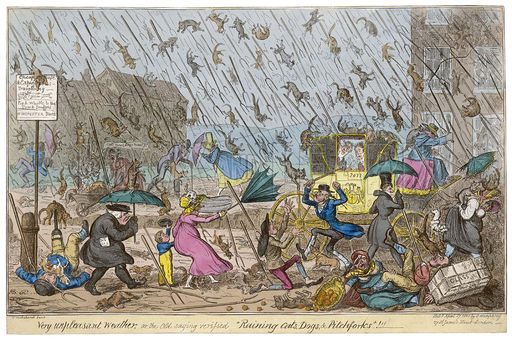
«It’s raining cat’s and dogs» An interesting phrase, isn’t it?
The phrase isn’t related to the well-known antipathy between dogs and cats, which is exemplified in the phrase ‘fight like cat and dog’. Nor is the phrase in any sense literal, i.e. it doesn’t record an incident where cats and dogs fell from the sky. Small creatures, of the size of frogs or fish, do occasionally get carried skywards in freak weather. Such involuntary flight must also happen to dogs or cats from time to time, but there’s no record of the events causing this phrase to be coined. No English meteorological records inform about this.
It has been suggested that cats and dogs were washed from roofs during heavy weather. This is a widely repeated tale which became very popular with the e-mail message «Life in the 1500s», which began circulating on the Internet in 1999. Here’s the relevant part of that:
I’ll describe their houses a little. You’ve heard of thatch roofs (соломенная крыша), well that’s all they were. Thick straw, piled high, with no wood underneath. They were the only place for the little animals to get warm. So all the pets; dogs, cats and other small animals, mice, rats, bugs, all lived in the roof. When it rained it became slippery so sometimes the animals would slip and fall off the roof. Thus the saying, «it’s raining cats and dogs.»
Do you believe it?
This is nonsense of course. In order to believe this tale we would have to accept that dogs lived in thatched roofs, which, of course, they didn’t. Even accepting that bizarre idea, for dogs to have slipped off when it rained they would have needed to be sitting on the outside of the thatch — hardly the place an animal would head for as shelter in bad weather.
(Adapted from: http://www.phrases.org.uk/meanings/raining%20cats%20and%20dogs.html)
PS: One supposed origin is that the phrase derives from mythology. Dogs and wolves were attendants to Odin, the god of storms, and sailors associated them with rain. Witches, who often took the form of their familiars — cats, are supposed to have ridden the wind. Well, some evidence would be nice. There doesn’t appear to be any to support this notion.
8. Test (reflection). Which houses represent Victorian and which Elizabethan architectural styles?
1) Upstream Elementary SB
2) http://www.phrases.org.uk
3) Pictures from the Internet
Если вы нашли ошибку, пожалуйста, выделите фрагмент текста и нажмите Ctrl+Enter.




